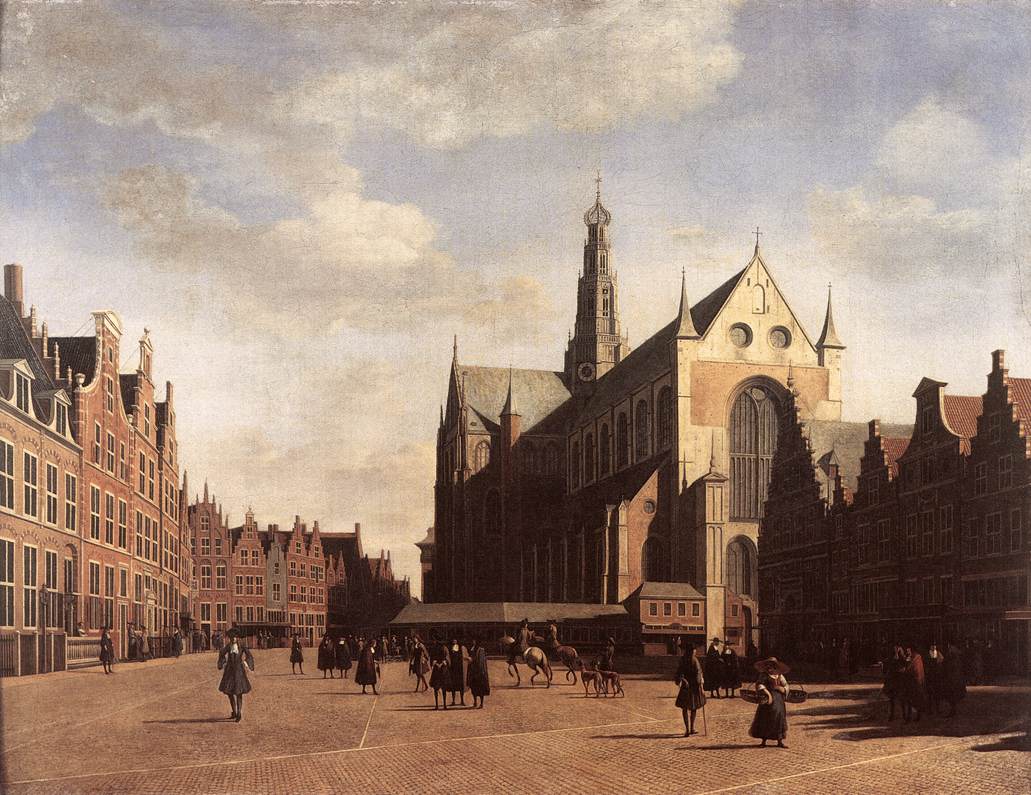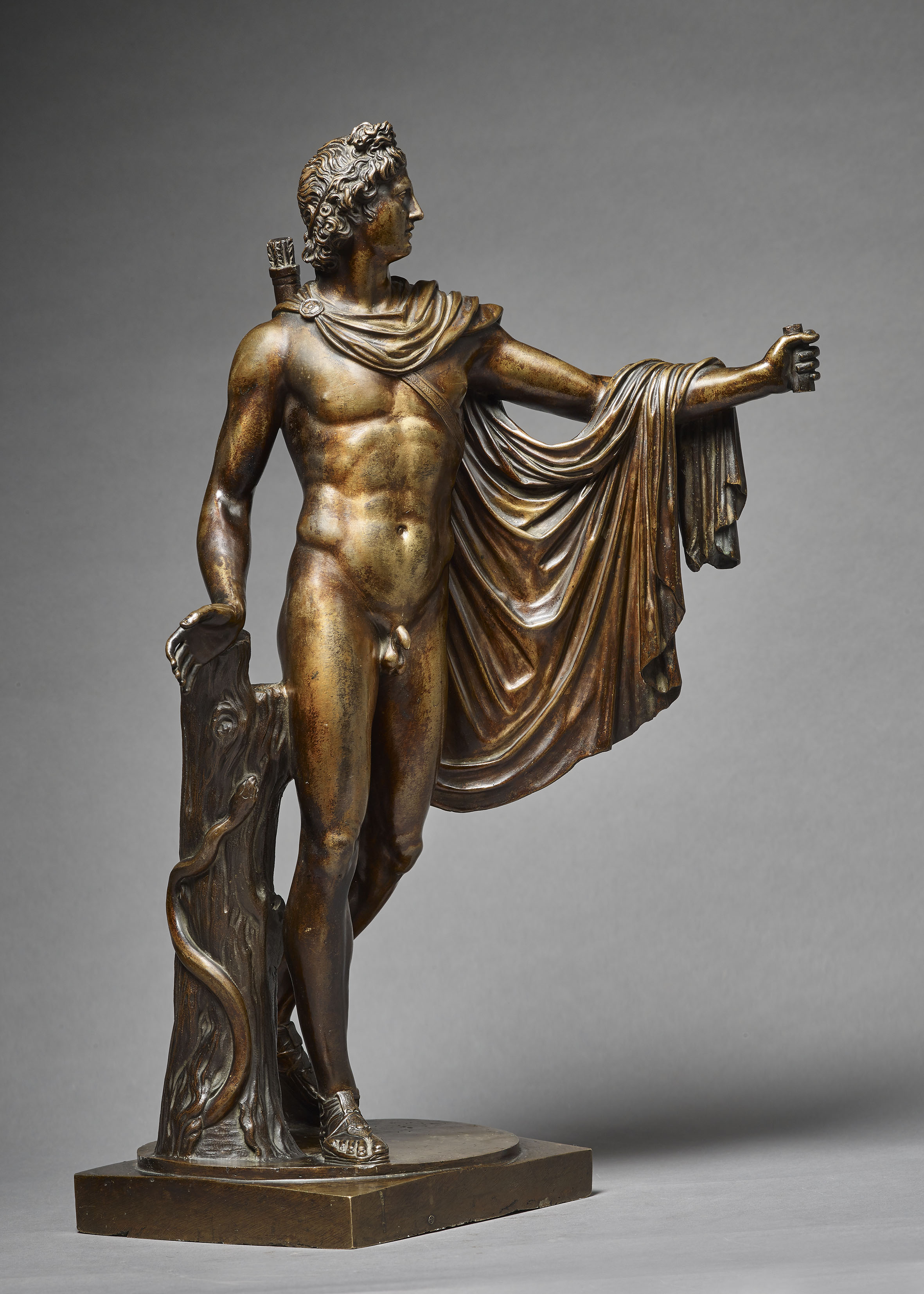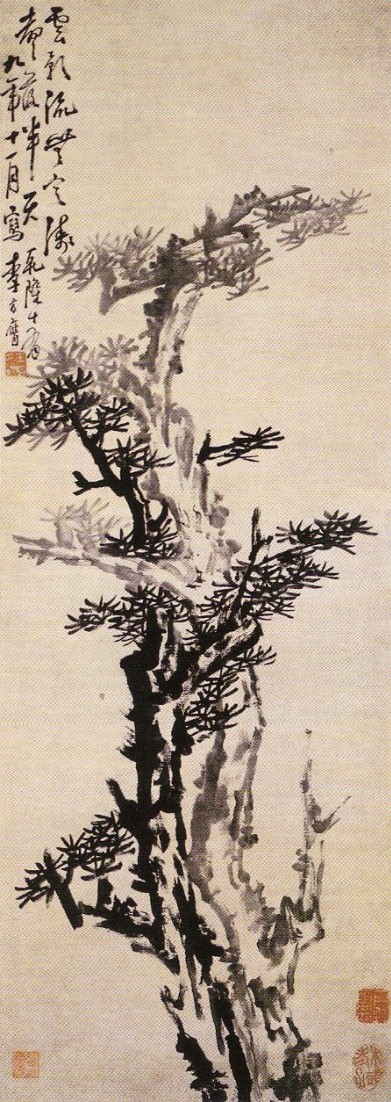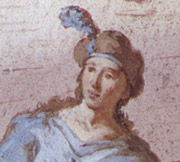|
1696 In Art
Events from the year 1696 in art. Events A sculpture of a walking horse now attributed to Giovanni Francesco Susini (c. 1585 – c. 1653), is sold as a work by Susini's master Giambologna by the art dealer Marcus Forchondt in Antwerp to Prince Johann Adam Andreas I von Liechtenstein. Paintings * Gerrit Adriaenszoon Berckheyde – ''The Market Square at Haarlem with the St. Bavo'' * Jacob de Heusch – ''River View with the Ponte Rotto'' (Brunswick Gallery, Romer) Sculptures *Peter Van Dievoet - '' The White Lamb'' (Brussels) Births * January 5 – Giuseppe Galli Bibiena, Italian designer/painter (died 1757) * March – Joseph Anton Feuchtmayer, German Rococo stuccoist and sculptor (died 1770) * March 5 – Giovanni Battista Tiepolo, Italian painter (died 1770) * March 31 – Mattia Bortoloni, Italian Rococo painter (died 1750) * ''date unknown'' ** Laurent Delvaux, French sculptor (died 1778) ** Kim Du-ryang, Korean genre works painter of the mid Joseon period (died 1763) ... [...More Info...] [...Related Items...] OR: [Wikipedia] [Google] [Baidu] |
Giovanni Francesco Susini
Giovanni Francesco (Gianfrancesco) Susini (c.1585 – after 17 October 1653) was a Mannerist Florentine sculptor in bronze and marble. Life Susini was born in Florence, and trained in the workshop of Giambologna. He continued to work in Giambologna's style, and Susini's sculpture was already mistaken for that of his master by the end of the century. His uncle, Antonio Susini, was the principal bronze-caster of Giambologna, and the young Francesco received early training as a junior member of Giambologna's workshop. A trip to Rome in 1624-26 gave him first-hand experience of classical antique, 16th century, and the emerging Baroque statuary, latter exemplified by Bernini's youthful ''Apollo and Daphne'', but his own Mannerist style was already matured. He made wax copies of the recently discovered Borghese ''Hermaphroditus'' for casting upon his return to Florence. His bronze reduction of the Laocoön is likely based on the copy of it in Florence. As a sculptor, Susini is k ... [...More Info...] [...Related Items...] OR: [Wikipedia] [Google] [Baidu] |
1770 In Art
Events from the year 1770 in art. Events * Anne Vallayer-Coster is admitted to the Académie royale de peinture et de sculpture at the age of twenty-six. McKinven, Mary Jane. June 2002. ''Stunning Still Lifes by Anne Vallayer-Coster, Foremost 18th-Century Painter in Court of Marie-Antoinette'' National Gallery of Art (June 2002) Works * Thomas Gainsborough – approximate date ** ''The Blue Boy'' ** '' Thomas Linley'' * Sir Joshua Reynolds – '' Colonel Acland and Lord Sydney: The Archers'' * Alexander Roslin ** Portrait of the artist's wife (Marie-Suzanne Giroust) ** Portrait of Prince Frederick Adolf of Sweden * George Stubbs ** A Horse Frightened by a Lion' (Walker Art Gallery, Liverpool) ** '' A Lion Attacking a Horse'' (Yale University Art Gallery) * Giovanni Domenico Tiepolo – ''The Immaculate Conception with Saint Lawrence and Saint Francis of Paola'' (approximate date) * Benjamin West – ''The Death of General Wolfe'' Births * January 13 – Anatole Devosge, Fren ... [...More Info...] [...Related Items...] OR: [Wikipedia] [Google] [Baidu] |
Li Fangying
Li Fangying 李方膺 (1696–1755) was a Qing Chinese painter from Jiangsu. He served as a county magistrate for 20 years. As a painter he is best known for painting plant imagery specifically pines, bamboos, plum blossoms and orchids. He was one of the Eight Eccentrics of Yangzhou Eight Eccentrics of Yangzhou () is the name for a group of eight Chinese painters active in the eighteenth-century, who were known in the Qing Dynasty for rejecting the orthodox ideas about painting in favor of a style deemed expressive and individ .... References External links Li Fangying - China culture [...More Info...] [...Related Items...] OR: [Wikipedia] [Google] [Baidu] |
1763 In Art
Events from the year 1763 in art. Events * In Venice ** Canaletto and Francesco Zuccarelli are elected to the Accademia di Belle Arti di Venezia. ** Francesco Guardi begins painting the 12 ''Doge's Feasts'' series. Paintings * François Boucher – '' The Judgement of Paris'' * John Singleton Copley – Portraits of James Warren and Mercy Otis Warren * Francesco Guardi – '' Miracle of a Dominican Saint'' (for San Pietro Martire (Murano)) * Matthäus Günther – Frescos in Benedictine Abbey Church of St. Marinus and St. Anianus, Rott am Inn * George Stubbs (approximate date; Tate Britain) ** Horse Frightened by Lion' ** Horse Devoured by a Lion' * Benjamin West – ''Cymon and Iphigenia'' (lost) * Johann Zoffany – ''Three sons of the Earl of Bute'' Image:James Warren.jpg, Copley – ''James Warren'' File:Mrs James Warren (Mercy Otis), by John Singleton Copley.jpg, Copley – ''Mercy Otis Warren'' Births * June 26 – George Morland, English painter of animals and rusti ... [...More Info...] [...Related Items...] OR: [Wikipedia] [Google] [Baidu] |
Joseon Dynasty
Joseon (; ; Middle Korean: 됴ᇢ〯션〮 Dyǒw syéon or 됴ᇢ〯션〯 Dyǒw syěon), officially the Great Joseon (; ), was the last dynastic kingdom of Korea, lasting just over 500 years. It was founded by Yi Seong-gye in July 1392 and replaced by the Korean Empire in October 1897. The kingdom was founded following the aftermath of the overthrow of Goryeo in what is today the city of Kaesong. Early on, Korea was retitled and the capital was relocated to modern-day Seoul. The kingdom's northernmost borders were expanded to the natural boundaries at the rivers of Amrok and Tuman through the subjugation of the Jurchens. During its 500-year duration, Joseon encouraged the entrenchment of Confucian ideals and doctrines in Korean society. Neo-Confucianism was installed as the new state's ideology. Buddhism was accordingly discouraged, and occasionally the practitioners faced persecutions. Joseon consolidated its effective rule over the territory of current Korea and saw the ... [...More Info...] [...Related Items...] OR: [Wikipedia] [Google] [Baidu] |
Genre Works
Genre art is the pictorial representation in any of various media of scenes or events from everyday life, such as markets, domestic settings, interiors, parties, inn scenes, work, and street scenes. Such representations (also called genre works, genre scenes, or genre views) may be realistic, imagined, or romanticized by the artist. Some variations of the term ''genre art'' specify the medium or type of visual work, as in ''genre painting'', ''genre prints'', ''genre photographs'', and so on. The following concentrates on painting, but genre motifs were also extremely popular in many forms of the decorative arts, especially from the Rococo of the early 18th century onwards. Single figures or small groups decorated a huge variety of objects such as porcelain, furniture, wallpaper, and textiles. Genre painting ''Genre painting'', also called ''genre scene'' or ''petit genre'', depicts aspects of everyday life by portraying ordinary people engaged in common activities. One comm ... [...More Info...] [...Related Items...] OR: [Wikipedia] [Google] [Baidu] |
Korea
Korea ( ko, 한국, or , ) is a peninsular region in East Asia. Since 1945, it has been divided at or near the 38th parallel, with North Korea (Democratic People's Republic of Korea) comprising its northern half and South Korea (Republic of Korea) comprising its southern half. Korea consists of the Korean Peninsula, Jeju Island, and several minor islands near the peninsula. The peninsula is bordered by China to the northwest and Russia to the northeast. It is separated from Japan to the east by the Korea Strait and the Sea of Japan (East Sea). During the first half of the 1st millennium, Korea was divided between three states, Goguryeo, Baekje, and Silla, together known as the Three Kingdoms of Korea. In the second half of the 1st millennium, Silla defeated and conquered Baekje and Goguryeo, leading to the "Unified Silla" period. Meanwhile, Balhae formed in the north, superseding former Goguryeo. Unified Silla eventually collapsed into three separate states due to ... [...More Info...] [...Related Items...] OR: [Wikipedia] [Google] [Baidu] |
Kim Du-ryang
Gim Du-ryang (1696–1763), also known as Kim Du-ryang, was a painter of the mid Joseon period. He was the son of Gim Hyogyeong, a ''Hwawon'' (royal court painter). Gim Duryang followed his father's career by entering the royal service as a member of the Dohwaseo, the official painters of the Joseon court. He was good at almost all genres of painting, including '' muninhwa'' (painting in the literal artistic style, '' sansuhwa'' (landscape painting), '' yeongmohwa'' (animal-and-bird painting) and '' inmuhwa'' (portrait painting). Gallery Towooart provides a short notice and an argumented selection of paintings. Image:Kim_Duryang-Sapsalgae-1743.jpg, ''Sapsal dog'' Image:Kim Duryang-Scratching dog.jpg, Scratching dog See also *Korean painting *List of Korean painters *Korean art *Korean culture The traditional culture of Korea is the shared cultural and historical heritage of Korea and southern Manchuria before the division of Korea in 1945. Manchuria refers to the anci ... [...More Info...] [...Related Items...] OR: [Wikipedia] [Google] [Baidu] |
1778 In Art
Events from the year 1778 in art. Events * December – The artistic cargo of the British ship ''Westmorland'', seized by the French, is acquired by Spanish interests. * Nicholas Pocock gives up his career as a seaman and devotes himself to painting. Paintings * John Singleton Copley – '' Watson and the Shark'' * Francisco Goya – '' Children With a Cart'' * Jean-Antoine Houdon – Portrait busts of Rousseau and Voltaire * John Hamilton Mortimer – Sir Arthegal, the Knight of Justice, with Talus, the Iron Man (from Spenser’s ‘Faerie Queene’)' * Sir Joshua Reynolds ** ''Jane, Countess of Harrington'' ** ''Lady Caroline Howard'' ** ''Captain John Hayes St Leger'' * George Romney – '' Jane Gordon, Duchess of Gordon, and Her Son, George Gordon'' * Richard Samuel – '' Portraits in the Characters of the Muses in the Temple of Apollo'' * Gilbert Stuart – ''Self-portrait'' * Benjamin West – ''The Battle of the Boyne'' * Johann Zoffany – ''Tribuna of the Uffizi'' (co ... [...More Info...] [...Related Items...] OR: [Wikipedia] [Google] [Baidu] |
Laurent Delvaux
Laurent Delvaux (1696, in Ghent – 24 February 1778, in Nivelles) was a Flemish sculptor. After a successful international career that brought him to London and Rome, he returned to the Austrian Netherlands where he was a sculptor to the court. Delvaux was a transitional figure between the Baroque and Neo-classicism. Life Training Delvaux probably trained in his native Ghent under the local sculptor J. B. van Helderberghe. At the age of 18 he went to Brussels to study under Pierre-Denis Plumier from Antwerp and attended the local drawing academy.Laurent Delvaux at the London He went to London in 1717 where h ...[...More Info...] [...Related Items...] OR: [Wikipedia] [Google] [Baidu] |
1750 In Art
{{Year nav topic5, 1750, art Events from the year 1750 in art. Events *The Accademia di Belle Arti di Venezia is founded by the Venetian Senate as Venice’s school of painting, sculpture, and architecture, with Giovanni Battista Piazzetta as its first president. * Marcello Bacciarelli enters the service of Augustus, Elector of Saxony and King of Poland. Works * Jean Barbault paints '' Neapolitan Herder and a Cow leaving a Cave'' ( Musée des Beaux-Arts de Strasbourg, France) * Canaletto paints ** ''Bacino di S. Marco: From the Piazzetta'' ( National Gallery of Victoria, Melbourne, Australia) ** ''The Thames from the Terrace of Somerset House, Looking toward St. Paul's'' ( Yale Center for British Art, New Haven, Connecticut) ** ''A View of the Molo and the Riva degli Schiavone in Venice'' ( Yale University Art Gallery, New Haven) * Andrea Casali paints '' Lucretia'' (approximate date) * Nihâl Chand paints ''Bani Thani'' (approximate date) * Filippo della Valle carves the ' ... [...More Info...] [...Related Items...] OR: [Wikipedia] [Google] [Baidu] |
Mattia Bortoloni
Mattia Bortoloni (31 March 1696 – 9 June 1750) was an important painter of the early Italian Rococo period. He began his career as a student of Antonio Balestra of Verona and was active throughout northern Italy. Biography For many years the growth of Bortoloni's reputation was constrained by two factors. First, his work was heavily centered on frescos (that is, wall paintings created in wet plaster), which generally must be viewed on-site and are often located in places of restricted accessibility. Second, some of his most important work became, through the years, anonymous or mis-attributed to others, including his better-known rival, Giovanni Battista Tiepolo, who was born in the same year. Since 1950, however, appreciation of Bortoloni's work has been revived by new scholarly discoveries and several exhibitions with informative catalogs. The first major breakthrough came in 1950 with publication of Nicola Ivanoff's provocative discovery that the mysterious and anonym ... [...More Info...] [...Related Items...] OR: [Wikipedia] [Google] [Baidu] |





